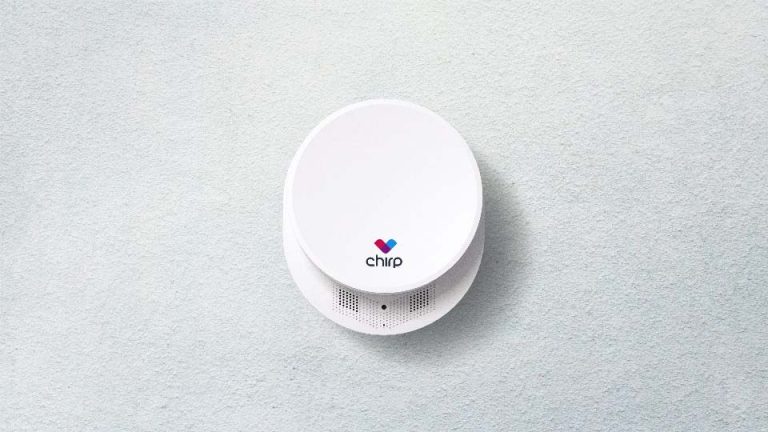When Justin Schorn co-founded Chirp, he hoped this project would be more mission-driven than his previous startup.
Schorn is an experienced startup founder whose last company was acquired in 2016.
He stayed with the company until 2019, when he said the time came to start something new.
“I had come across things going on in the aging-in-place or senior care world, and we started looking into that,” Schorn said.
We were surprised how low-tech everything really was. Innovation had stood still for 30 years, and we decided that more can be done,” he said.
Chirp has developed a new solution to help aging adults safely live in their homes longer.
While traditional remote medical alert systems rely on buttons or wearable devices, Chirp’s solution uses radar technology to locate people in a home and detect when a person has fallen.
Chirp uses radar technology to determine the position of people in a home. The system uses that data to track the user throughout the house without needing a wearable device or camera.
Schorn said that Chirp uses the data to understand how much time a user spends on activities like sleeping, moving about the house or sitting in a room.
It can then use that information to understand if there is a fall or other issue in the home.
“The data lets the system understand the behavior in the home. Then it can look for significant changes that would allow a caregiver to proactively engage the care recipient and make sure that everything’s okay,” Schorn said.
Protecting the aging adult’s dignity and privacy are critical requirements for Schorn. He said that many falls and accidents happen in the bathroom, but asking to put a camera in the bathroom can be a difficult conversation to have with people.
“Cameras are great for certain applications, but I think there’s a limit to where you can put a camera. That’s where Chirp comes in,” Schorn said.
Many existing remote medical alert solutions use technology that was not purpose-built for aging adults.
Schorn said that remote monitoring systems were designed for an aging adult’s family, rather than the aging adult. He added that many existing systems do not protect the aging adult’s privacy or dignity.
“These solutions took the same approach as when monitoring a baby. Just because you’re 80 doesn’t mean you want to make a tradeoff between your safety and your dignity,” Schorn said.
“There’s not a big enough voice for the care recipient in the product development process, and we wanted to be more mindful of that,” he said.
Another challenge with traditional remote medical alert systems is the rejection and adherence rates.
Even though the primary user is an aging adult, it is often the user’s adult children who make the purchase decision.
Schorn said those decisions are often driven by a fall or other medical incident that causes the user’s children to find a solution quickly.
“The aging adult may look at it as a grudge—they had a fall and now their children want to stick them with a camera or give them a button to press—and they don’t want to use it,” Schorn said.
“If the technology was more welcoming and less stigmatizing to the care recipient and the family, then the barriers that we’ve seen in the last 30 years become a lot smaller and it’s a better outcome for a lot of people,” Schorn said.
The startup is working to bring the product to market and is part of the University of Waterloo’s Velocity incubator in downtown Kitchener.
As Canada’s population ages, Schorn said that solutions need to be developed with input from aging adults.
According to Statistics Canada, the percentage of Canadian adults aged 65 and older increased from 14.1 per cent in 2010 to 19 per cent in 2022. They forecast that trend will continue, with the percentage reaching 22.5 per cent by 2030.
“There’s a big enough market opportunity, but also a big need to improve things. I’m at the age when my parents aren’t young anymore. We felt like this was something deeply personal that we had to pursue,” Schorn said.

